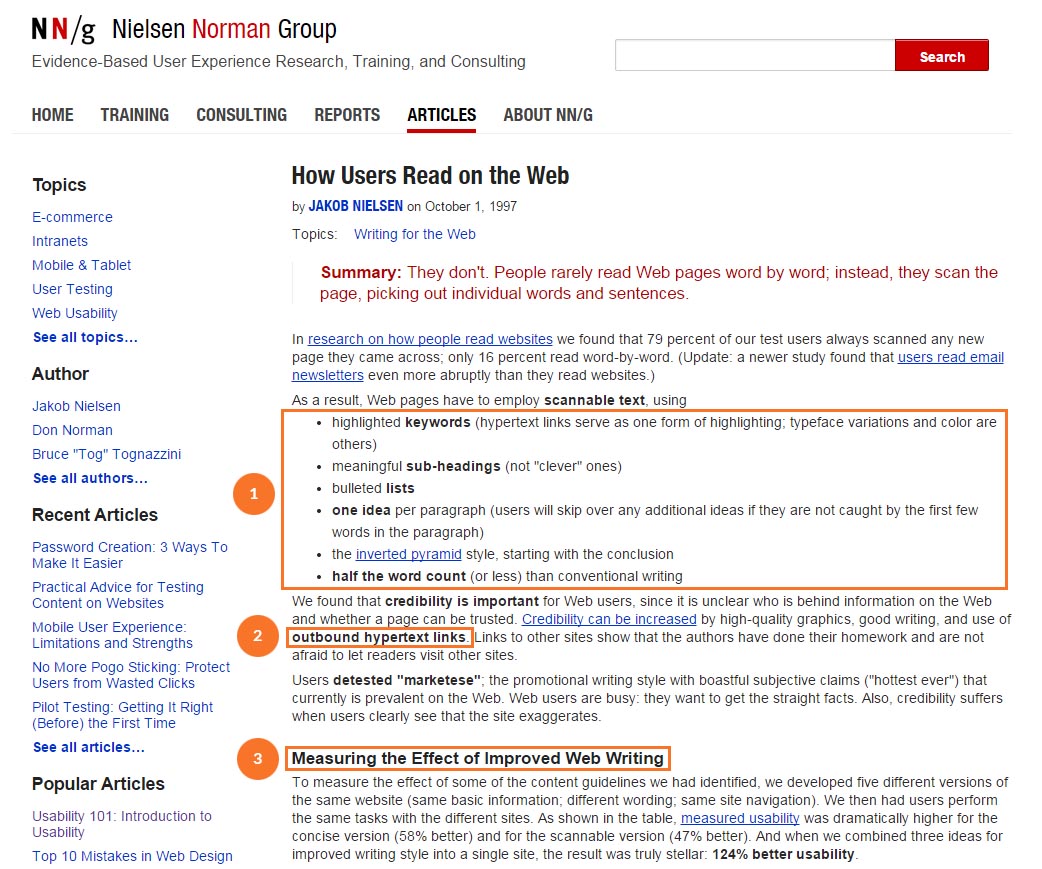First, two quick reasons lists are so popular (you can find a whole slew of lists that explain why lists are so popular) and then one reason why you want to use them as a small business owner.
They’re easy to read and comprehend
You’ve probably heard it by now, if not from me by someone else, that users rarely read word-for-word and rather scan the page. Their eyes search for highlighted keywords, meaningful subheadings, bulleted lists, and will potentially speed-read your introduction or conclusion paragraph if you’re lucky. There are nearly countless accounts outlining this phenomenon from Nielsen to Steve Krugg. This fits nicely into why those Buzzfeed-esque articles are so wildly popular on the Internet today—we love scanning. Take a moment to think, have you taken the time to read the contextual paragraphs underneath the lists or do you just read the headlines and move on?
People enjoy having their suspicions proven
While this reason is a bit more anecdotal, social media seems to prove this point on a daily basis. Surf through your feed on Facebook and Twitter and you’ll undoubtedly come across a shared list from a friend who thinks “reason #4 is eerily accurate.” When one succumbs to lure of these clickbait lists, isn’t it always to see if our preconceived item is on that list and we’re either ecstatic that it aligns with our suspicions or dismiss the credibility of the author and walk away frustrated because it doesn’t align with our bias.
Lists drive people to your site
Without a doubt. Aren’t you here now? Lists are popular in our culture today. We enjoy the quick satisfaction of having our biases affirmed and we love being able to quickly and effectively skim large amounts of information. So, why aren’t you creating your content for easy consumption? No one would encourage you to remove all of your meat and potatoes from your website. That’s bad; however, there is something to be said about this trend (a trend that has been fairly steady throughout the history of the Internet).
1. Use bulleted lists when possible
Eye tracking and usability studies have proven that people who use websites are drawn to bulleted lists. Use them when you can to draw users to important information about your business and services. It will help people scan large sections of information and know whether or not the information is relevant to what they are looking for.
2. Link or bold key words
If you visited the previous Nielsen Norman Group article, you’ll notice that they practice all three of these suggestions. It’s not by accident. They link and bold keywords throughout their articles. This helps scanning and enables users to quickly find relevant bits of information. Rarely will people read the entire article; they will, however, scan it for information they themselves believe is pertinent.
3. Use descriptive and meaningful headings
You should be using headings on all of your pages. Not only does it help readers find what they want to spend time on, but it always lets Google and other search engines know what your page is about. Using proper headings and injecting your keywords will help users find your information organically and through search engine searches.
